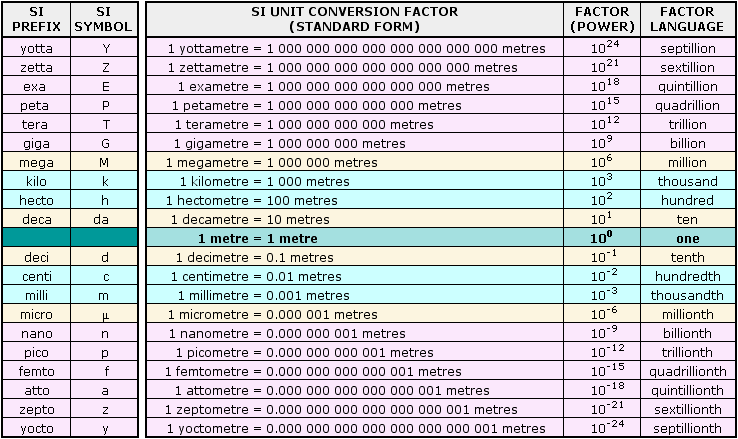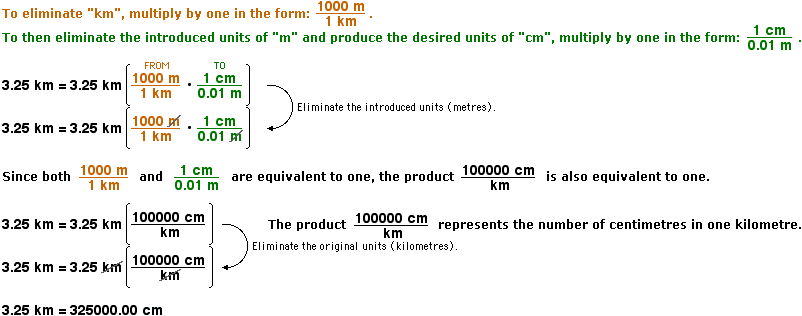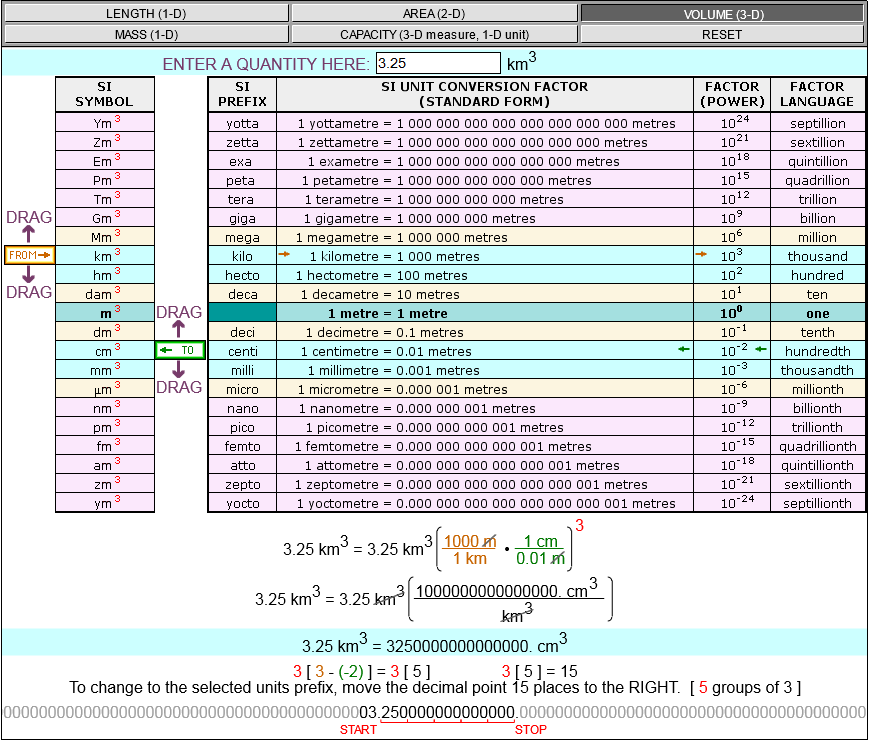The seven basic units are listed in the chart below.

The International System of Units (SI) consists of a set of basic units, compund units and derived units together with a set of prefixes. It is is based on the metric system.
The seven basic units are listed in the chart below.

Compound units are created from basic units, but are not given a unique name. Compound units are also called derived units. Some of the many possible compound units are listed in the chart below.

Derived units are created from the basic units, and are given a unique name. Some of the many derived units are listed in the chart below.

A single prefix may be added to units to produce an integral power of ten multiple of the original unit.
Example: "kilo" denotes a multiple of a thousand and "centi" denotes a multiple of a hundredth.
As a result 1 kilometre = 1000 metres and 1 centimetre = 0.01 metres.
A list of prefixes is given in the chart below. The basic unit of "metres" is used in the chart. Please note that the prefixes "kilo", "hecto", "centi" and "milli" are used very frequently (light blue); the prefixes "mega", "deca", "deci" and "micro" are are used less frequently (light red), while the remaining prefixes (light purple) are rarely used (other than for extremely large or small numbers in science).

To convert between equivalent units with different prefixes, multiply by one (in a special form).
The following are equivalent to one, since any number divided by itself (other than zero) is one.

Since 1 kilometre = 1000 metres and 1 centimetre = 0.01 metres, the following are also equivalent to one.

A procedure to change 3.25 km to centimetres is shown below:

Note that we are dealing with powers that always have a base of ten. This means that determining the result of changing the prefix of a unit will be a simple matter of "moving" the decimal to a different location.
Subtract the exponent associated with the prefix of the unit you are changing "TO" from the exponent associated with the prefix of the unit you are changing "FROM". In this example, the exponent associated with the prefix of the unit you are changing "TO" (cm) is -2 and the exponent associated with the prefix of the unit you are changing "FROM" (km) is 3.
3 - (-2) = 5
Move the decimal five places to the right of the original position.

If the difference is negative, move the decimal place to the left.
Changing prefixes when working with units of area and units of volume are similar. Here is an example.
 Image onlyInstructions text as in global.js
Image onlyInstructions text as in global.js





